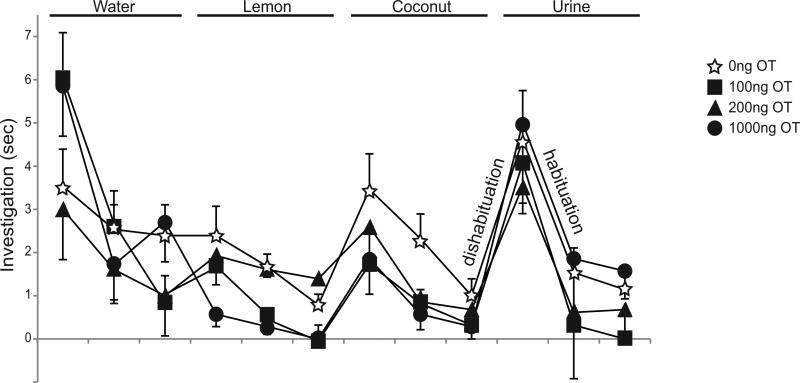Fig. 4.
Oxytocin (OT) does not enhance olfactory investigation and discrimination. Investigation time in seconds (mean ±SEM) for each presentation of an olfactory cue is represented by open stars for 0ng OT and by filled squares, triangles and circles for OT infusion at 100, 200 and 1000ng, respectively, over the course of three consecutive exposures to each odorant (water, lemon, coconut and urine). Labels illustrate decreases in investigation time from an initial to final odor presentation (habituation) and increases in investigation time from a repeat odor to a novel odor (dishabituation).

